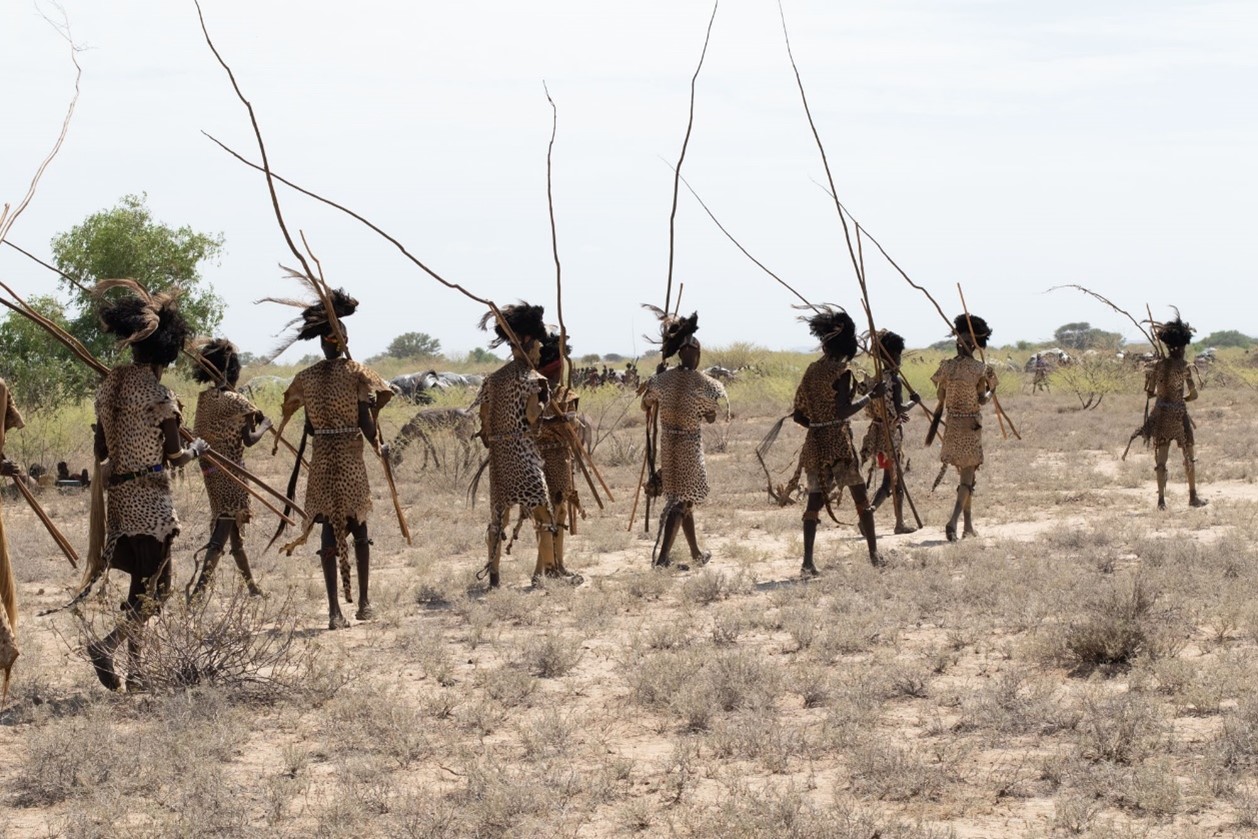A biocultural conflict between a coming-of-age ceremony of the Daasanach community and wildlife conservation exists in East Africa, but the young community members are calling for alternatives that support their ceremony and wildlife conservation, a study from the University of Helsinki finds.

A new study from the University of Helsinki examines a case of a coming-of-age ceremony that impacts threatened animal populations, which in turn threatens the cultural practice itself. Researchers name this reciprocal relationship as ‘biocultural conflict’.
Dimi is the main traditional coming-of-age ceremony of the Daasanach community, extending between southeast of South Sudan, southern Ethiopia, and northern Kenya. Participating in Dimi is the only way a man can acquire the status of an elder and become a true and respected member of the Daasanach community. During the ceremony, participants must exhibit spotted skins of cheetahs or leopards as capes. The increasing number of participants in the ceremony and decreasing big cat populations in the area have led to prohibitively high skin prices in recent years.
“The idea of this study started the very first day that we heard about the most important ceremony of the Daasanach community, the Dimi, and the associated use of skins. On that day, we decided to better understand the ceremony, to explore changes that may exacerbate biocultural conflict, and to identify local concerns and foreseeable opportunities to support biological and cultural diversity,” explains Miquel Torrents-Ticó, the lead author of the study and a PhD student from the Faculty of Biological and Environmental Sciences at the University of Helsinki.
Biocultural approaches to conservation have previously mainly focused on those cultural practices of Indigenous peoples and local communities that effectively support biological diversity. However, there are also practices that exacerbate the decline of wildlife species. In these biocultural conflicts, the authorities have historically regulated these practices by top-down conservation approaches, criminalizing these cultural practices. This has further marginalized Indigenous peoples and local communities, stripping them of their rights to conserve their cultural heritage.
Changes in Dimi that Exacerbate its Impacts on Wildlife
Researchers counted a substantial number of skins in Dimi ceremonies and found out in interviews that Dimis have grown in numbers of participants in recent years, and that the events are more frequent. This is causing Dimi to become unsustainable at the sociocultural and ecological levels, and thus threatening the celebration of Dimi as it is currently practised.
“Many young members of the community have voiced their concerns about the unavailability and high costs of skins,” says Torrents-Ticó.
The increasing value of skins threatens distant cheetah and leopard populations. Furthermore, unaffordable prices increase the use of other local spotted species, such as civet, genet or serval.
In view of these changes, there is urgency in aligning this cultural practice and the ecological context that supports it. Nevertheless, Dimi represents a case where there is a possibility for change.
“The day we were invited to witness the Dimi ceremony was very special, not only because we were going to see it, but because the invitation reflected a strong, genuine and long-lasting relations of trust between the community and us,” explains Torrents-Ticó.

Opportunities for Dialogue
Conservation science and policy need to consider the biocultural conflicts and find ways of preserving both biodiversity and cultural practices more broadly. Due to the global decline of natural resources, these conflicts are bound to increase and worsen.
“Opening space for dialogue with local communities and understanding both the social and ecological dimensions of biocultural conflicts is fundamental for supporting the conservation of biocultural heritage,” emphasizes Torrents-Ticó.
Nevertheless, there is clear potential for a sustainable form of Dimi. The younger generations —especially highly-educated community members — are aware of the loss of wildlife altering the very foundations of the Dimi ceremony. Alternatives need to be found to support the continuance of their cultural practices and wildlife conservation. Such awareness opens the possibility of establishing constructive dialogues toward more local sustainable cultural practices.
Author
Miquel Torrents-Ticó is a Doctoral Researcher at the Global Change and Conservation Lab (GCC) and also a member of Helsinki Institute for Sustainability Science (HELSUS), University of Helsinki.
Reference
This blog post is based on a study by:
Torrents-Ticó, M., Fernández-Llamazares, Á., Burgas, D., Nasak, J. G., & Cabeza, M. (2022). “Biocultural conflicts: understanding complex interconnections between a traditional ceremony and threatened carnivores in north Kenya.” Oryx. doi:10.1017/S0030605322000035

